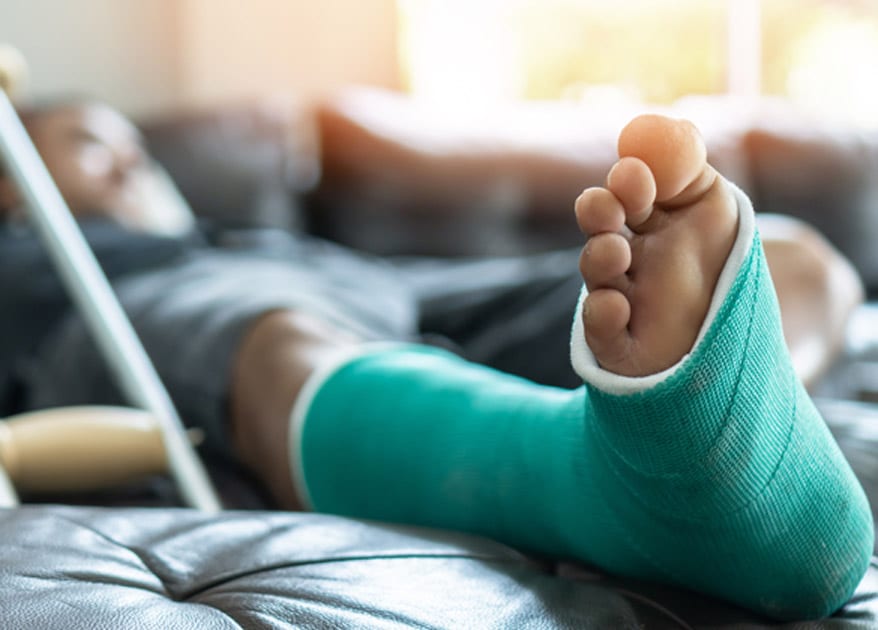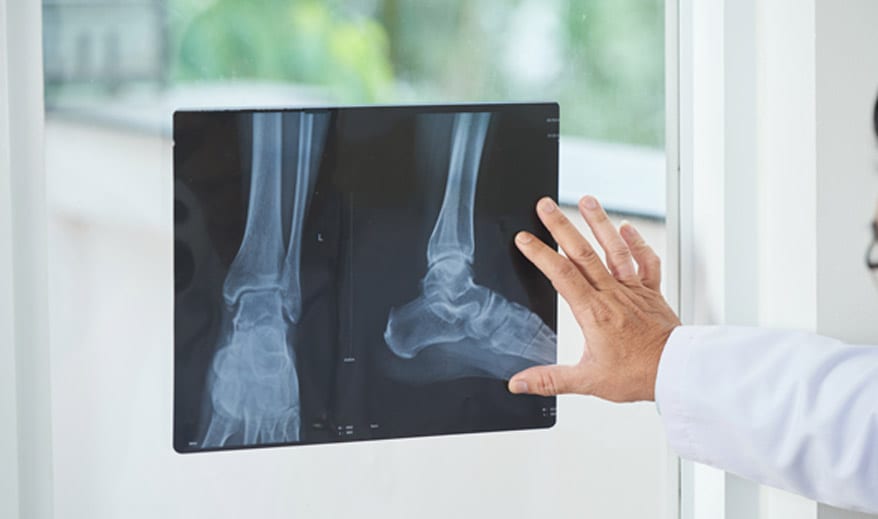
Fractures may range from tiny cracks in the bones to breaks that cut through the skin. Treatment for severe fractures may require surgery to implant plates, rods or screws into the broken bone to ensure the bone heals in the proper position.
Symptoms of Fractures
Individuals with a broken foot may experience the following symptoms:
- Immediate, throbbing pain
- Pain that increases with activity and decreases with rest
- Bruising
- Swelling
- Tenderness
- Deformity
- Difficulty walking or bearing weight
Patients should see a doctor if they see an obvious deformity, if the pain and swelling don’t improve after taking self-care measures, or if the pain and swelling worsens. Patients should also see a doctor if they are unable to walk normally as a result of the injury.
Left untreated, a broken foot may lead to:
- Arthritis. Fractures that extend into a joint can lead to arthritis, many years in the future.
- Bone infection. An open fracture in which one end of the bone protrudes through the skin, may expose the bone to bacteria and lead to infection (osteomyelitis).
- Nerve or blood vessel damage. A fracture can lead to torn nerves and blood vessels, which may result in numbness or circulation problems, and even bone death and collapse.


Causes of Fractures
A fracture, or broken foot, may be caused by:
- A car accident — crushing injury may cause breaks that require surgery
- Falls — tripping and falling, such as landing on your feet after jumping down
- Impact from a heavy weight — dropping something heavy on the foot
- Misstep — miscalculating a step or putting the foot down incorrectly
- Overuse — caused by repetitive force or overuse, such as running long distances
Risk Factors
Individuals may be at increased risk of a fracture if they:
- Play high-impact sports, such as basketball, football, gymnastics, tennis, and soccer
- Use improper technique, such as not warming up and stretching, or faulty equipment, such as poorly fitting shoes
- Suddenly increase their activity level, such as during exercise
- Work in hazardous work environments, such as on construction sites
- Have a cluttered or poorly lit home
- Have decreased bone density (osteoporosis)
How a Fracture is Diagnosed
During an initial visit, the physician will examine the foot for points of tenderness and identify the exact location of the pain to determine its cause. The physician may move the foot into different positions to check the patient’s range of motion and ask the patient to walk a short distance so he or she can examine gait.
If the physician’s observation suggests a fracture, then the physician will recommend one or more of the following imaging tests:
- X-ray. The technician will take X-rays from several different angles to better see the bone.
- Bone scan. The technician will inject a small amount of radioactive material into a vein. The radioactive material will travel to the parts of bones that have been damaged and will show up as bright spots on an imaging scan.
- Computerized tomography (CT). CT scans will offer more detailed information about the bone and the surrounding soft tissue.
- Magnetic resonance imaging (MRI). MRI scans will help show ligaments and bones and identify fractures not captured by an X-ray.
Depending on the severity of the fracture, the patient may need medication, therapy, surgery, or all three.


